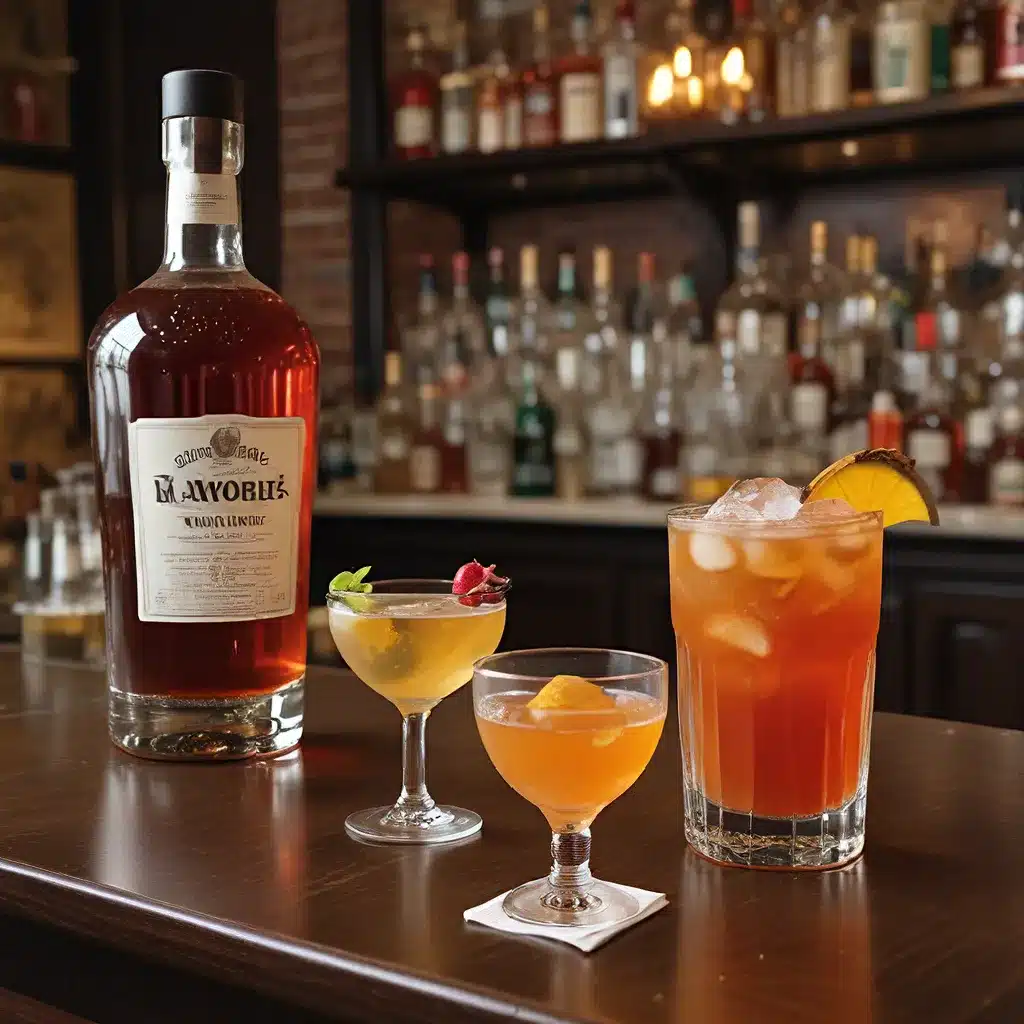
The Intoxicating Evolution of Drinking Culture
As I sit at the bar, glass in hand, I can’t help but marvel at the rich history that swirls around me. The cocktail, that delightful elixir that has captivated the imaginations of drinkers for generations, has a story to tell – one of innovation, indulgence, and the enduring human desire to elevate the simple act of imbibing.
Let’s dive into this intoxicating journey, shall we? From the Gilded Age to the Atomic Age, the Jazz Age to the Midcentury, the world of spirits and cocktails has evolved in captivating ways. Each era has left its indelible mark, shaping the flavors, rituals, and social significance of the cocktail culture we know and love today.
The Gilded Age: Cocktails of Elegance and Excess
The Gilded Age, a period of unprecedented economic growth and opulence in the late 19th century, set the stage for a cocktail renaissance. The wealthy elite sought to showcase their refined tastes, and the cocktail became a symbol of sophistication. Bartenders, often trained in Europe, introduced classic concoctions like the Old Fashioned, Martini, and Manhattan, each a testament to the art of blending spirits, bitters, and subtle sweetness.
But it wasn’t just the upper crust who indulged. The rise of speakeasies during the Prohibition era of the 1920s fueled a thriving underground cocktail culture, where creativity and resourcefulness reigned supreme. Bartenders became alchemists, improvising with whatever ingredients they could get their hands on to craft delectable libations.
The Jazz Age: Cocktails as Cultural Expression
The Jazz Age, marked by the vibrant music, art, and literature of the 1920s, brought a new level of social and cultural significance to the cocktail. Cocktail parties became a stage for self-expression, where the perfect pour was as much a statement as the latest fashion or the snappiest conversation.
Cocktail culture during this time was a reflection of the era’s dynamism and experimentation. Bartenders pushed the boundaries, creating colorful, whimsical concoctions that mirrored the exuberance of the Roaring Twenties. From the Sidecar to the French 75, these drinks became touchstones of the era’s joie de vivre.
The Atomic Age: Cocktails in the Shadow of the Bomb
The Atomic Age, ushered in by the dawn of the nuclear era, brought a fascinating dichotomy to the world of cocktails. On one hand, the promise of a benign atom powering the grid and every conceivable device fueled a sense of optimism and technological wonder. On the other, the looming threat of nuclear annihilation cast a shadow of anxiety over society.
Cocktail culture during this period reflected this duality. Vibrant, candy-colored creations like the Mai Tai and Suffering Bastard offered a momentary escape, a chance to be “buzzed” and “numbed” in the face of existential uncertainty. Meanwhile, the Playboy Club and its impeccably dressed bunnies became a symbol of the era’s unapologetic hedonism.
The Midcentury: Cocktails as Social Currency
As we move into the Midcentury, the cocktail emerged as a powerful social currency. Cocktail parties became a stage for status and sophistication, where the perfect pour was a reflection of one’s discerning taste and social standing.
Bartenders, once mere mixologists, now ascended to the ranks of celebrity. Their ability to craft innovative, visually stunning cocktails made them the toast of the town. The Tiki culture and its exotic, escapist libations became a symbol of the era’s fascination with all things foreign and tropical.
The Cocktail Renaissance: A New Era of Exploration
Today, we find ourselves in the midst of a cocktail renaissance, a time of renewed curiosity and experimentation. Bartenders and mixologists, armed with a deep understanding of history and an insatiable thirst for innovation, are pushing the boundaries of what a cocktail can be.
From the revival of long-forgotten classics to the creation of bold, boundary-pushing concoctions, the contemporary cocktail scene is a vibrant tapestry of flavors, techniques, and storytelling. Amari, bitters, and infused spirits have become the building blocks of a new generation of drinks, each one a unique expression of the mixologist’s craft.
Saint Marc is a shining example of this cocktail renaissance, where the rich history of spirits and mixology is celebrated through a menu that pays homage to the past while embracing the future. Whether you’re sipping on a timeless Old Fashioned or indulging in a cutting-edge creation, the experience is one of pure, unadulterated enjoyment.
The Future of Cocktails: Innovation and Exploration
As we look to the future, the world of cocktails continues to evolve, driven by the curiosity and creativity of those who are passionate about the art of the pour. Non-alcoholic spirits, botanical infusions, and sustainable practices are just a few of the trends that are shaping the cocktail landscape of tomorrow.
But the true essence of the cocktail, its ability to bring people together, to spark conversation, and to transport us to different times and places, will endure. Whether you’re sipping a classic Negroni or experimenting with a cutting-edge concoction, the cocktail remains a testament to the enduring human desire to elevate the simple act of imbibing.
So, raise your glass and join me on this intoxicating journey through the rich history of spirits and cocktails. Who knows what delightful discoveries await us around the next bend?
